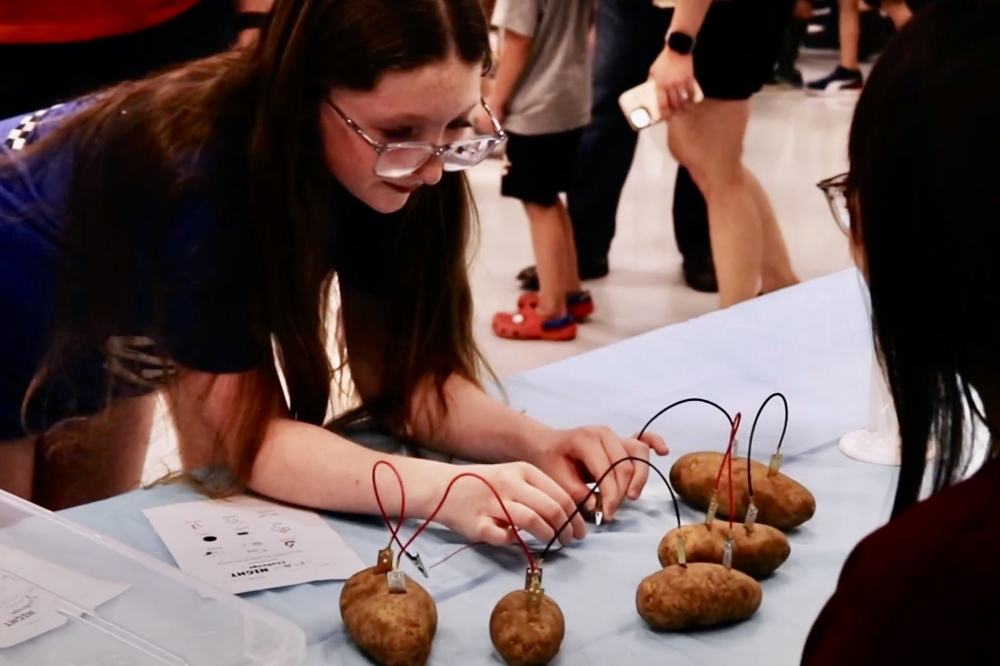The lab provides opportunities for students in kindergarten through fifth grade to express their creativity in areas of science, technology, engineering, art and math, Principal Sean Perry said.
“Student feedback has been great. They are really enjoying getting in there and doing something different,” Perry said.

After budget cuts and dipping enrollment forced the school to cut a science discovery class, Perry decided to put the leftover materials to use and charged the Homestead Parent Teacher Association with creating a science enrichment space.
Together with the parent volunteers and staff members, Perry drafted a grant proposal to the Lewisville Education Foundation, a nonprofit dedicated to financially supporting LISD students and teachers, to get the space up and running, he said. The foundation awarded the campus with a $2,500 grant, and the staff held an official ribbon-cutting in March before opening up the program for teacher use.

The lab activities correspond to the Texas Essential Knowledge and Skills, the curriculum standard outlined by the State Board of Education, Perry said. If classrooms are working on force of motion or covering plants in biology, then teachers will tailor the lab activities to those lessons.
“Some of the activities are broad, where they can be used just by all different grade levels, but then there are activities specific to grade level,” Perry said.
Teachers can reserve a time to bring in their class and use the space, and also check out different bins to use materials in their home classroom, he said. Typically only one teacher signs up at a time, but sometimes entire grade levels sign up for it and rotate throughout the day. In this case, the room may see upwards of 100 students during the eight-hour period.
The room can hold around 50 students, so it also doubles as an indoor recess space available for all grade levels. Usually two classes will share the room during recess, Perry said.

The lab was designed to help teachers make science more tactile and interesting, whether it's building robots out of Legos or conducting electricity through potatoes. It also allows students to learn in an environment outside the classroom, which has positive effects on mental health and comprehension, Perry said. However, it's not just science and math students who can benefit from the room. Teachers can use the creation area to appeal to more artistic students.
“I think the big thing is, we want to make sure that we hit all the different needs of students,” Perry said.
Additionally, the vibrant and boisterous environment of the space fosters communication skills between students as they work through activities separately and in teams, and discuss things they are learning, Perry said.
“I think it’ll help with performance long-term,” he said. “It's new, so its hard to say it's already made a contribution there, but kids are getting actively interested in different parts of the science, and it's making them do some critical thinking, which is going to help support everything that we're doing in the classroom.”

Perry said he hopes to make the lab a requirement moving forward, but for now it will remain an optional resource until teachers have more time to get their feet wet. The school administration also sent out surveys to teachers and students asking for feedback about their experience using the lab as well as input on what works and what doesn’t.
“We were trying to get some information about what they would want to see in there and the different topics that they would want to make sure that we cover,” Perry said.
While most of the materials are reusable, making the program largely self-sustainable, the campus is open to pursuing future LEF grants should the program evolve and require more funding, Perry said.
“I think it's going to continue to grow and change based on the needs that we have, and I think with all the different things that can be for kids' attention, it's a great way to try to access some of the kids that may not be responding to other ways,” he said.





